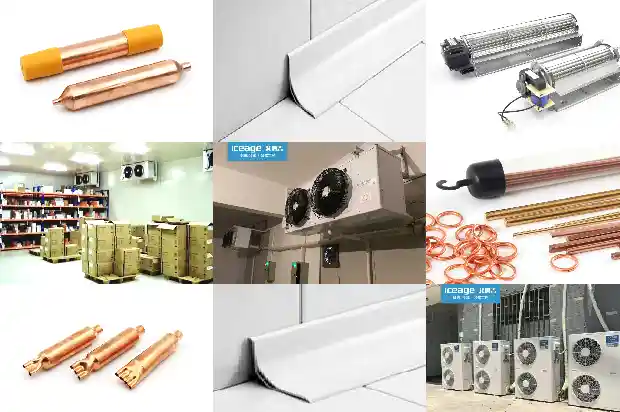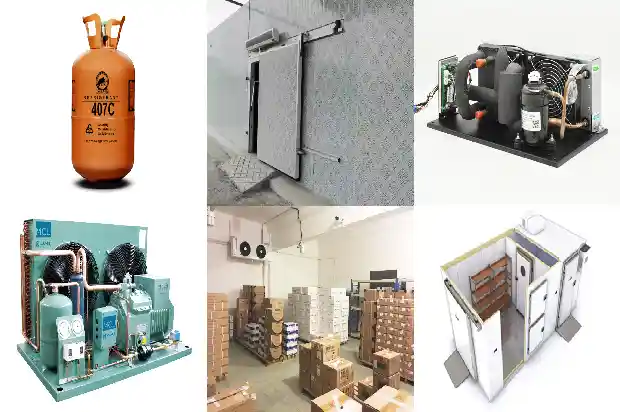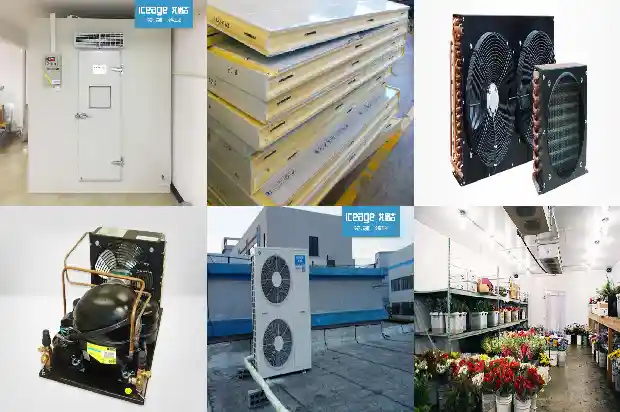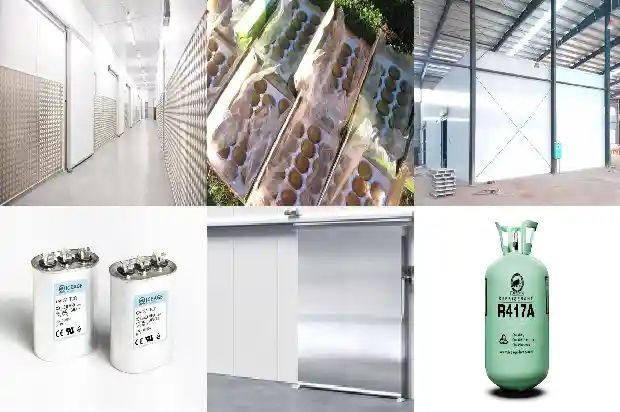Introduction to the Relationship between Refrigerants and Cold Storage Temperatures
2024-09-12
Refrigerant is a relatively important factor affecting the temperature of the cold storage. And the blockage of the throttle valve is an important factor affecting the flow rate of the refrigerant.
Generally, it can be judged whether the refrigerant flow rate of the throttle valve is appropriate by observing the evaporation pressure, the evaporation temperature and the frosting situation of the suction pipe. The main reasons for the blockage of the throttle valve are ice blockage and dirty blockage.
Ice blockage is due to the poor drying effect of the dryer. The refrigerant contains moisture. When it flows through the throttle valve, the temperature drops below 0 °C, and the moisture in the refrigerant freezes into ice and blocks the orifice of the throttle valve. Dirty blockage is due to the accumulation of more dirt on the inlet filter screen of the throttle valve, resulting in poor refrigerant circulation and blockage.
The amount of refrigerant in the system is insufficient and the refrigeration capacity is insufficient.
There are mainly two reasons for the insufficient refrigerant circulation volume. One is the insufficient refrigerant charge. At this time, it is only necessary to add a sufficient amount of refrigerant for the cold storage. The other reason is that there is a large amount of refrigerant leakage in the system. In this case, the leakage point should be found first, with the focus on checking the connections of pipes and valves.
The efficiency of the cold storage compressor is low, and the refrigerating capacity cannot meet the load requirements of the cold storage.
Due to long-term operation of the compressor, parts such as the cylinder liner and piston ring are severely worn, the fit clearance increases, the sealing performance will decrease accordingly, the gas transmission coefficient of the compressor will also decrease, and the refrigerating capacity will be reduced. When the refrigerating capacity is less than the heat load of the storage, it will cause the temperature in the storage to drop slowly. The refrigerating capacity of the compressor can be roughly judged by observing the suction and exhaust pressures of the compressor.

Generally, it can be judged whether the refrigerant flow rate of the throttle valve is appropriate by observing the evaporation pressure, the evaporation temperature and the frosting situation of the suction pipe. The main reasons for the blockage of the throttle valve are ice blockage and dirty blockage.
Ice blockage is due to the poor drying effect of the dryer. The refrigerant contains moisture. When it flows through the throttle valve, the temperature drops below 0 °C, and the moisture in the refrigerant freezes into ice and blocks the orifice of the throttle valve. Dirty blockage is due to the accumulation of more dirt on the inlet filter screen of the throttle valve, resulting in poor refrigerant circulation and blockage.
The amount of refrigerant in the system is insufficient and the refrigeration capacity is insufficient.

There are mainly two reasons for the insufficient refrigerant circulation volume. One is the insufficient refrigerant charge. At this time, it is only necessary to add a sufficient amount of refrigerant for the cold storage. The other reason is that there is a large amount of refrigerant leakage in the system. In this case, the leakage point should be found first, with the focus on checking the connections of pipes and valves.

The efficiency of the cold storage compressor is low, and the refrigerating capacity cannot meet the load requirements of the cold storage.
Due to long-term operation of the compressor, parts such as the cylinder liner and piston ring are severely worn, the fit clearance increases, the sealing performance will decrease accordingly, the gas transmission coefficient of the compressor will also decrease, and the refrigerating capacity will be reduced. When the refrigerating capacity is less than the heat load of the storage, it will cause the temperature in the storage to drop slowly. The refrigerating capacity of the compressor can be roughly judged by observing the suction and exhaust pressures of the compressor.

Related Articles
- Introduction to Inspection and Handling Methods for Refrigerant Leak in Cold Storage
- Introduction to Control Valves in Refrigeration Systems
- Introduction to Basic Types of Cold Storage
- Introduction to Lithium Bromide Absorption Chillers
- Introduction to the Advantages of Dual - temperature Cold Storage
- Introduction to Various Water Tanks in Air - conditioning Systems
- Introduction to the Cleaning Processes and Methods of Heat Exchangers and Cooling Towers
- Introduction to Six Kinds of Two-stage Compression Refrigeration Systems
- Introduction to Key Points of Compressor Grouping in Quick-freezing Cold Storage
- Introduction to the Construction and Features of Cold Storage in Cold Chain Logistics
- All-round Introduction to Condensers and Evaporators!
- Introduction to Vapor Barrier of Cold Storage and Moisture Protection of Equipment
- Introduction to Oil Collector in Refrigeration System
- Technical Introduction of Process Cooling Water System
- Introduction to Air-cooled Chiller
- Introduction to Five Classification Functions of Cold Storage Installation for Refrigeration
- Introduction to Precooling Methods for Fruits and Vegetables
- Introduction to Types of Condensers in Cold Storage
